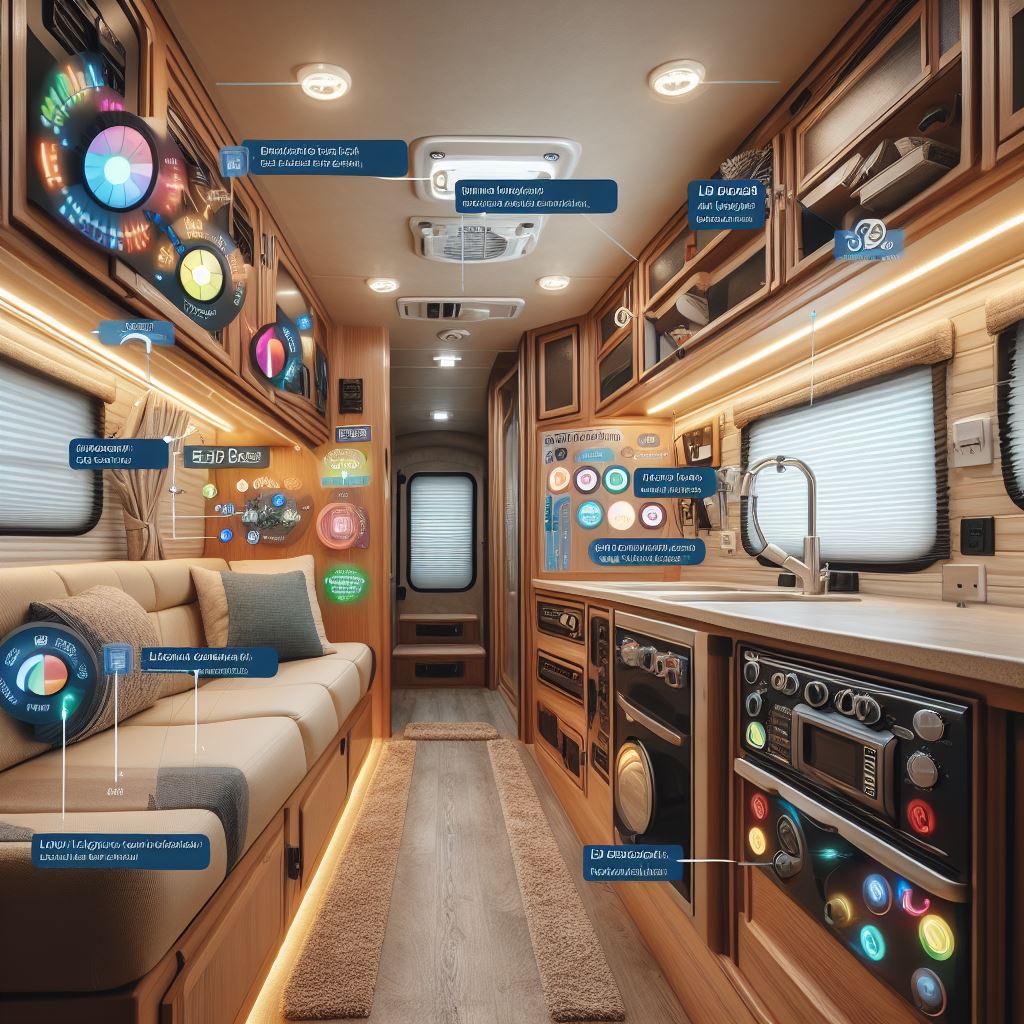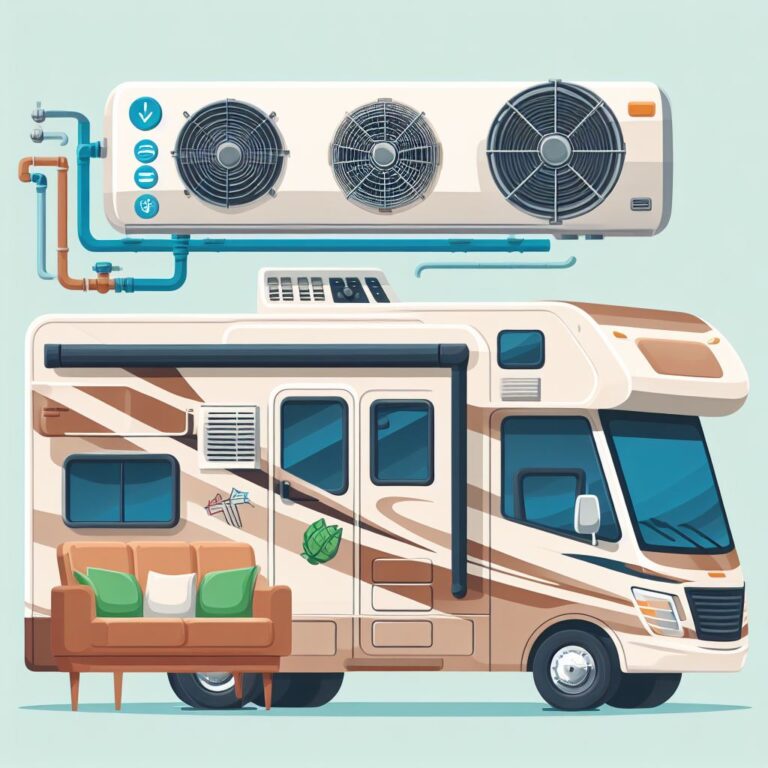How To Choose RV Lighting
Understanding the Importance of Proper RV Lighting
Recreational vehicles, or RVs, provide a unique blend of comfort and mobility. They are equipped with several essential facilities, much like a traditional home, to ensure convenience during travel. As essential as it is in any residential setting, proper lighting in an RV plays a crucial role, substantially affecting not only functionality and safety, but also the overall ambiance and aesthetics of the interior.
Ideally, lighting in an RV goes beyond mere illumination. It should enhance visibility, especially for tasks that require precision, such as cooking, reading, or navigation. Safety is another cardinal factor mediated by proper lighting – it aids in preventing potential trips and falls in the compact space. Moreover, it adds to the appeal and comfort of the RV environment, enabling customization to suit personal preferences. Therefore, a well-planned and well-implemented RV lighting system contributes significantly to the experience and satisfaction of an RV trip.
Types of RV Lighting: A Comprehensive Guide
Recreational vehicles (RVs) utilize a variety of lighting fixtures to brighten up their interiors, exteriors, and underlying functionalities. A key player in this assortment is the overhead lighting, often used in the form of dome lights and recessed lights. Dome lights serve as a popular choice owing to their wide spread of light, thereby providing an almost ambient lighting solution. Recessed lighting, on the other hand, offers a well-blended, sleek look without compromising the quality of illumination.
In addition to these, task lighting in RVs contributes to the lighting spectrum, specifically in areas that demand focused lighting like kitchen countertops and study corners. Here, puck lights and strip lights showcase their utility. Puck lights, circular in form, produce a concentrated light output and strip lights, being versatile, support both ambient and task lighting. Lastly, safety shouldn’t be neglected when it comes to any vehicle. Hence, RVs employ specialized lighting like running, tail, and signal lights to ensure safe trips. Each light type carries its own purpose and value, thus solidifying the importance of proper RV lighting.
Considerations for Selecting the Right RV Lights
When it comes to outfitting your Recreational Vehicle (RV) with the proper lighting, there are several factors to consider. First and foremost, you need to factor in the type of light source. There are different types of RV lights available in the market, such as halogen, fluorescent, and LED. Halogen lights may be more energy-consuming compared to others, while fluorescent lights can provide a vast amount of illumination but tend to be more delicate. On the other hand, LED lights are energy-efficient and long-lasting, making them a popular choice for many RV owners.
Another important consideration is the amount of light that you require. This is typically measured in lumens. The higher the lumens, the brighter the light. This factor is crucial, especially if you plan to engage in activities that require a good amount of visibility like reading or cooking. Additionally, consider the placement of the lights. Some areas might require more lighting, such as the kitchen or work areas, while others like the bedroom may demand softer lighting. It’s essential to strike a balance between functionality and comfort when selecting the right RV lights.
Exploring Eco-Friendly Lighting Options for RVs
The desire to reduce the carbon footprint has led many RV owners to consider eco-friendly lighting options for their vehicles. Consequently, several manufacturers have risen to the occasion, providing a range of greener alternatives. These alternatives not only minimize environmental impact but also offer benefits such as energy efficiency and longer lifespan. This makes them a favourable choice for individuals eager to incorporate sustainable practices in their RV travel.
Among the popular eco-friendly lighting options, LED lights stand out due to their energy efficiency. They consume significantly fewer watts than traditional incandescent or halogen lights, resulting in less energy use and longer battery life. Solar-powered lights are another preferable choice. Harnessing the power of the sun, these lights can operate even in areas where electricity is scarce, bolstering the off-grid potential of your RV. Additionally, it’s worth noting that some manufacturers even present lights made from recycled materials, reinforcing their commitment to sustainability.
LED Lights for RVs: Pros and Cons
The versatility and energy efficiency of LED lights have contributed to their growing popularity among RV owners. While traditional options such as incandescent and halogen bulbs are still in use, many individuals are transitioning to use LED lighting, drawn in by the avant-garde features and long-term benefits it offers. LED lights not only produce a crisper, more vibrant illumination than their predecessors, but they also consume less energy, which is a key consideration for those utilizing solar power. More so, they generate less heat, thereby reducing the risk of overheating or causing a potential fire hazard, which gives RV owners an added sense of safety.
However, despite the numerous advantages, LED lights also have their downsides. For starters, they require a larger upfront investment compared to traditional light bulbs. While they do offer cost savings in the long run, the hefty initial price tag can be off-putting for some RV owners. Additionally, while LED lights are praised for their crisp light, some find the illumination to be too harsh or cold for their liking, lacking the soft, warm glow of incandescent bulbs. Lastly, although rare, LED lights can also suffer from flickering issues, usually due to electrical fluctuations within the RV’s power supply system.
Understanding the Role of Lumens in RV Lighting
The measurement of light output from a source is denoted in lumens. This unit provides a more accurate measure of the light’s brightness than wattage, which is more a measure of energy consumption utilized by the bulb. Therefore, when we talk about lighting in your recreational vehicle (RV), lumens become a significant consideration. Brightness is key in guaranteeing visibility, ensuring safety, and creating a pleasant ambiance throughout the vehicle.
Selecting RV lights purely based on wattage may result in lighting that is too dim or too harsh, leading to an unwelcoming atmosphere or even strain on the eyes. By making lumens a major determinant, RV owners can compare different light bulbs objectively and select the one that best fulfills their demands. For instance, an energy-saving bulb with lower wattage could emit the same amount of lumens as a higher-wattage incandescent bulb, thereby offering the same brightness but at a lower operating cost.
Installation Process for RV Lights
The process of installing recreational vehicle (RV) lights can be diverse, largely based on the type of lighting system. While most standard RV lighting fixtures are relatively straightforward to install, some might require a more advanced procedure. Generally, the installation process involves removing the existing light fixture, attaching essential wiring, and finally fitting in the new light fixture. It’s vital to ensure all wiring is securely connected for functionality and safety.
It is crucial to consider certain factors during the installation process. First, one should verify that the chosen lighting system is compatible with the RV model. Secondly, it’s important to follow installation guidelines provided by the manufacturer. Proper adherence to these instructions would avoid potential short circuiting or other electrical mishaps. Often, if the process seems too complex, it may be best to hire an RV technician for professional assistance.
Maintenance and Safety Tips for RV Lighting
Proper maintenance of RV lights is essential to ensure they continue to offer the best illumination possible. Cleaning the light fixtures regularly can prevent dust and grime accumulation, which may otherwise lead to dim lighting. It’s important to also check for any damaged wirings or broken bulbs. Sometimes, issues might not be noticeable unless the lights are turned on, so it’s a good idea to perform this check both during the day and at night – when the lights are switched on. Regular maintenance not only increases the lifespan of the lights but also cuts down the chances of unexpected breakdowns or failures.
From a safety perspective, ensuring the lights are working efficiently is crucial, particularly for exterior lights that signal other road users about your vehicle’s movements like braking or turning. A good practice is to test all external lights frequently, including brake lights, turning lights, and parking lights. Switching to shock-resistant bulbs can provide added safety as these are less likely to rupture into sharp fragments. Additionally, it’s important to understand the lighting rules and guidelines in the places you’ll be traveling to. Some regions might have specific requirements regarding the brightness, positioning, or color of RV lights.
The Impact of RV Lighting on Energy Consumption
Recreational vehicles, commonly known as RVs, can consume a substantial amount of energy, particularly with inappropriate lighting choices. Inside an RV, every single watt counts, and the style of lighting chosen can most definitely make a big difference. The energy usage directly correlates to the overall cost of operating an RV, thus considering energy-efficient lighting options is not only beneficial for environmental reasons, but also from a financial standpoint.
Traditional incandescent lights are known for consuming a large amount of energy. For instance, using a single 60-watt incandescent bulb for just a few hours a day can significantly increase an RV owner’s energy consumption and costs. On the other hand, modern energy-efficient options like Light Emitting Diodes (LEDs) and Compact Fluorescent Lights (CFLs) significantly decrease energy usage, allowing RV users to enjoy long-lasting illumination without worrying about the heightened energy consumption. LED lights, for example, use roughly 75% less energy than their incandescent counterparts, generating similar levels of light.
Case Study: Successful RV Lighting Upgrades and Implementations
In a recent case, a family decided to upgrade their RV lighting system to improve energy efficiency and usability. Previously, their motorhome was equipped with traditional incandescent bulbs that consumed a high amount of power and often required replacement due to their short life span. The family decided to transition to LED lights after conducting comprehensive research into various RV lighting options. The new lighting system included general purpose LEDs for interior usage and specialized lights for specific areas such as the kitchen and reading spots.
The implementation process was smooth, and they found that the LED lights made a noteworthy difference immediately. The new system provided a more uniform light, enhancing visibility throughout the RV. The family reported a significant decrease in their energy consumption, reducing their reliance on their RV’s generator and thereby saving on fuel as well. Furthermore, the LED lights, having a longer lifespan, proved to be cost-efficient by cutting down on the frequency of replacement. This case showcases how a smart upgrade in RV lighting systems can yield positive results in various areas including energy usage, cost-efficiency, and user experience.
Why is proper RV lighting important?
Proper RV lighting is crucial for safety and visibility. It allows you to comfortably navigate your RV during night hours and can enhance the overall functionality and aesthetics of your RV.
What are the different types of RV lighting?
RV lighting can be categorized into various types including interior lighting, exterior lighting, navigation lighting, and mood lighting. Each type has a specific purpose and can be found in different forms such as LED lights, halogen lights, and fluorescent lights.
What factors should I consider when selecting RV lights?
When selecting RV lights, you should consider factors such as energy efficiency, durability, light output measured in lumens, installation process, cost, and the specific needs of your RV.
Can you tell me about eco-friendly lighting options for RVs?
Eco-friendly lighting options for RVs include LED lights and solar-powered lights. They are energy-efficient, long-lasting, and help to reduce your carbon footprint.
What are the pros and cons of LED lights for RVs?
Pros of LED lights for RVs include their energy efficiency, durability, and longevity. Cons may include the initial cost of purchase, which is often higher than traditional lighting options.
How do I understand the role of lumens in RV lighting?
Lumens is the measure of light output. The higher the lumens, the brighter the light. Understanding lumens helps in selecting the right intensity of light for your RV.
How do I install RV lights?
The installation process for RV lights depends on the type of light. Some can be easily screwed in, while others may require professional installation. It’s important to follow the manufacturer’s instructions for installation.
How can I maintain my RV lights?
Regular cleaning, timely bulb replacement, and ensuring proper sealing to prevent water entry are some of the ways you can maintain your RV lights.
How does RV lighting impact energy consumption?
Depending on the type of lights used, RV lighting can significantly affect energy consumption. LED lights, for example, consume less energy compared to traditional lighting options.
Can you share examples of successful RV lighting upgrades and implementations?
The article provides a detailed case study on successful RV lighting upgrades and implementations, showcasing how the right lighting choices can enhance the functionality and aesthetics of an RV.
- How To Choose TIPHOPE RV Accessories - February 10, 2024
- How To Choose Joinfworld RV Accessories - February 10, 2024
- How To Choose Conntek RV Accessories - February 9, 2024







